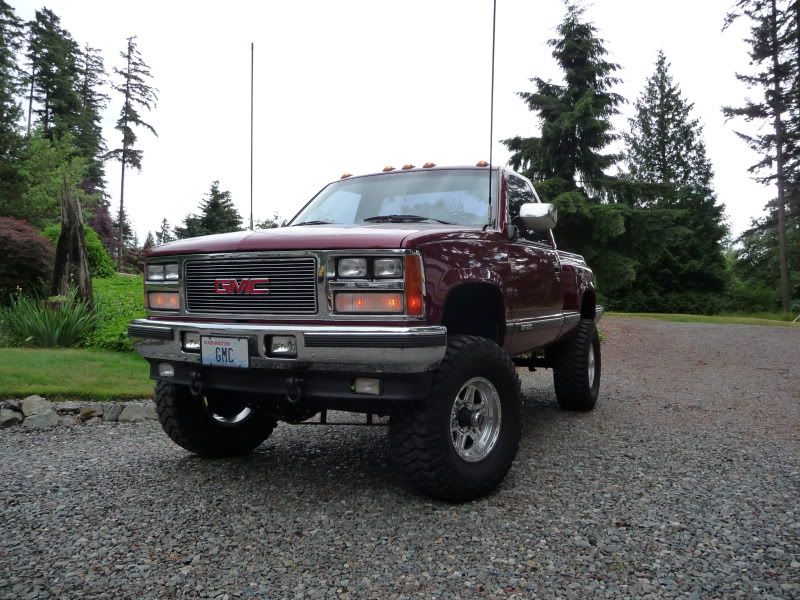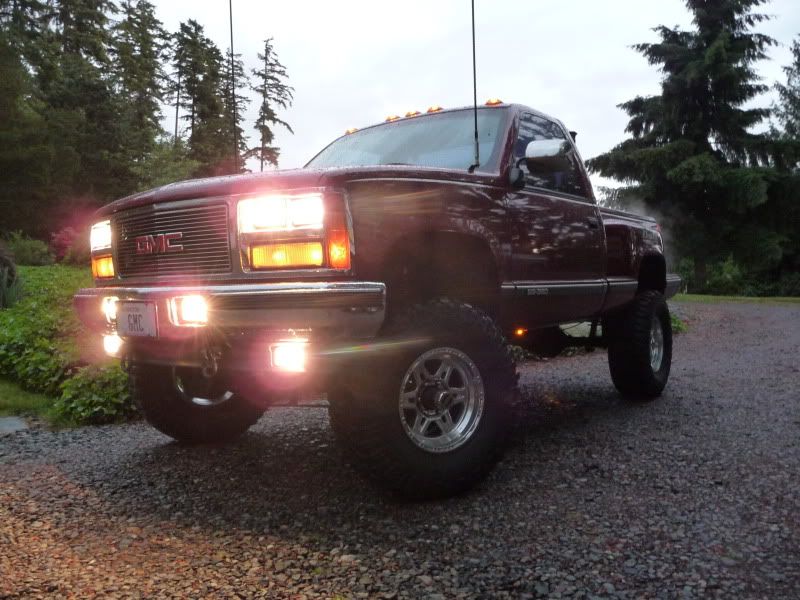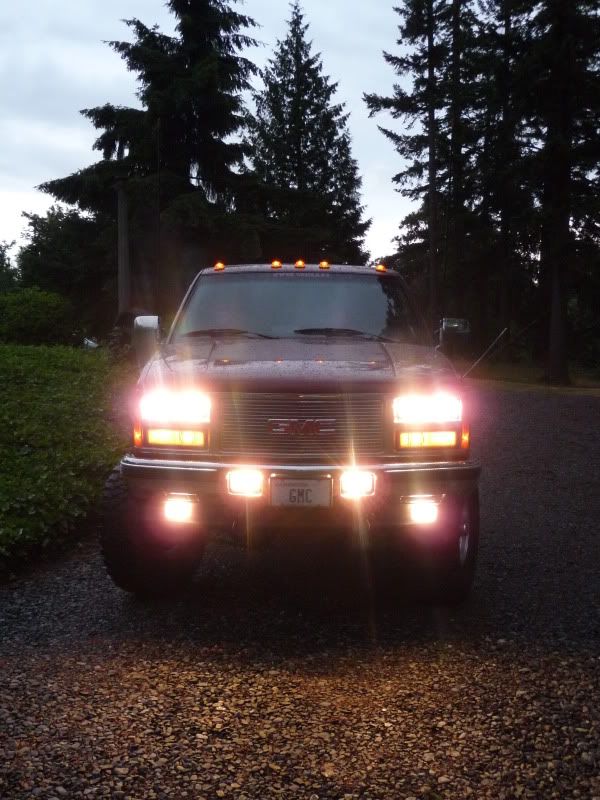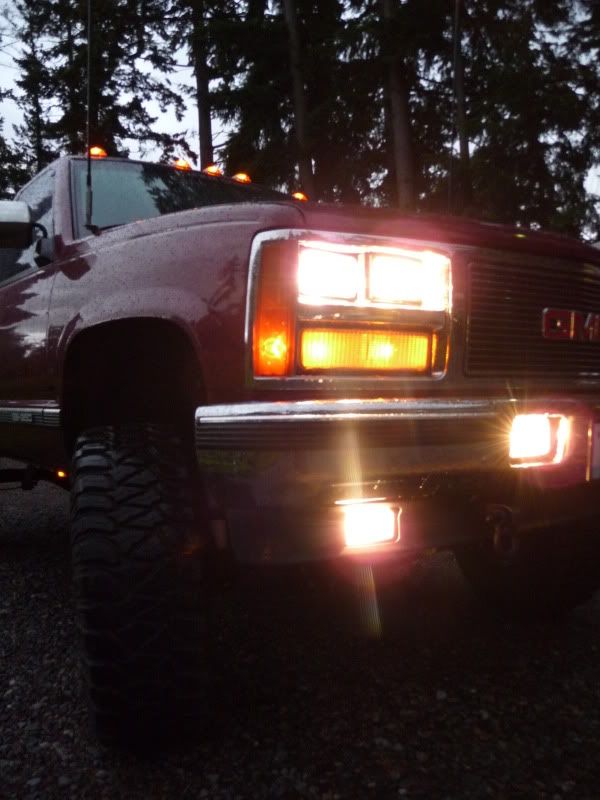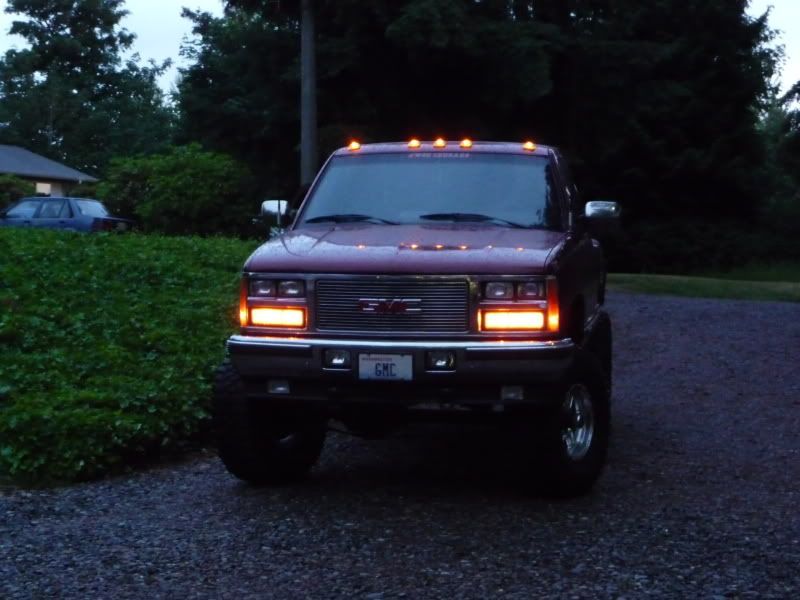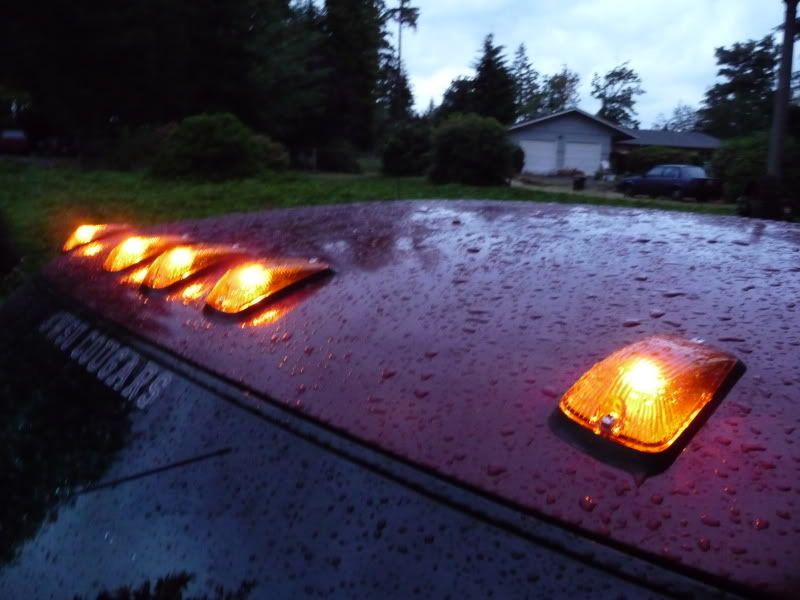88gmctruck
02GMCtruck
Disclaimer: This is a guide, and I am NOT responsible for any holes you drill in your roof. Measure twice!
Here is the procedure I used to install OEM cab clearance lights on my truck. It took me about 3 months to finally bust out the drill and go to town. I got my cab lights from a seller on ebay for a total of $45 shipped. This included gaskets, new lenses, screws and the wiring harness (all of which are WAY more at the dealer, the harness is like $60 alone). I ended up ordering the factory nut insert, which ran about $7. Below is a list of parts needed to install these lights.
Lens ------------------ 15951646
Base ------------------- 15691885
Harness ---------------- 15302097
Bulbs ------------------ Style 194
Nut -------------------- 11609841 - Requires special tool to install
Screw ------------------ ? - They are metric M8x.5x30 I believe
There is an option to use a different nut/screw setup. I went to the local Ace hardware store and got the same style nut insert in rubber with matching stainless screws. I feel these work just as well as the factory nuts, and since they are rubber help seal the screws better. They also don't require a special tool to install. Below is the factory crimp nut and screw.
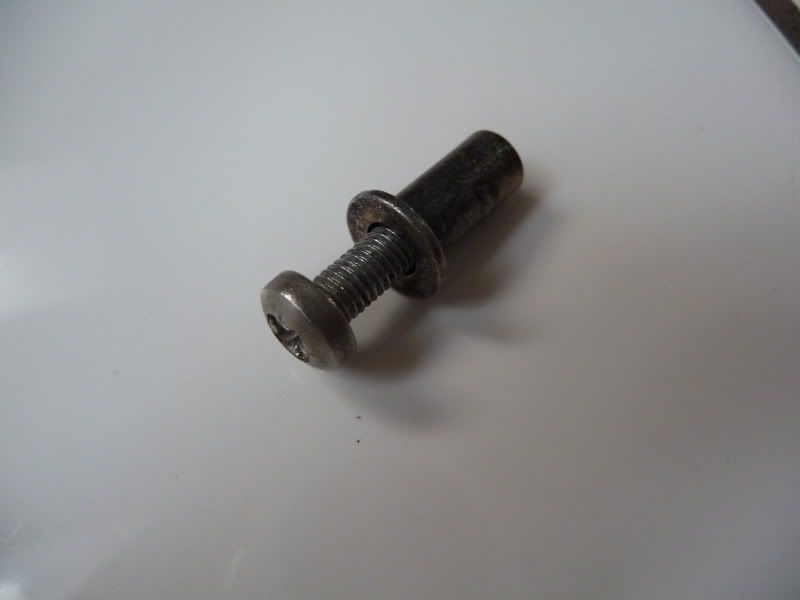
To start off you will need to determine where you want the cablights. I chose to install them in the factory locations. I measured one of the 3500HD trucks at work and drew this little diagram up. I then layed down masking take (to mark on) and set the lights up in their positions to check everything out.
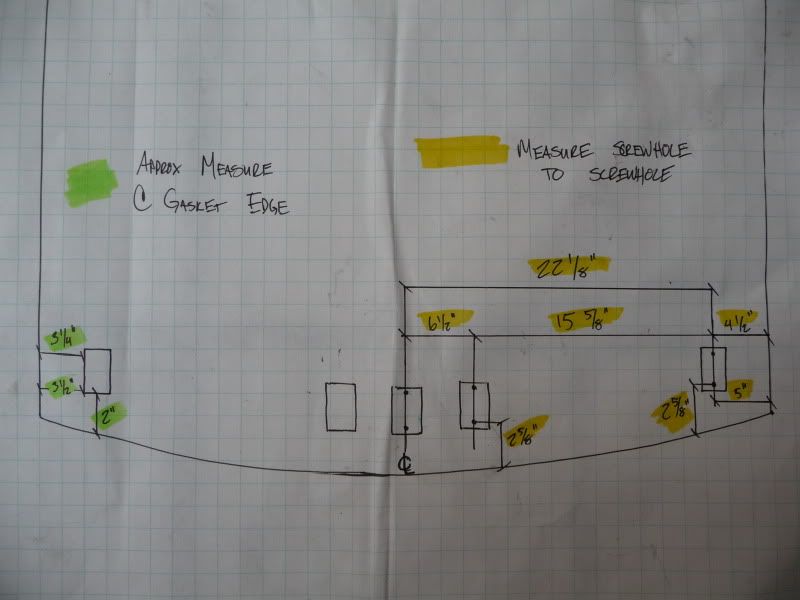
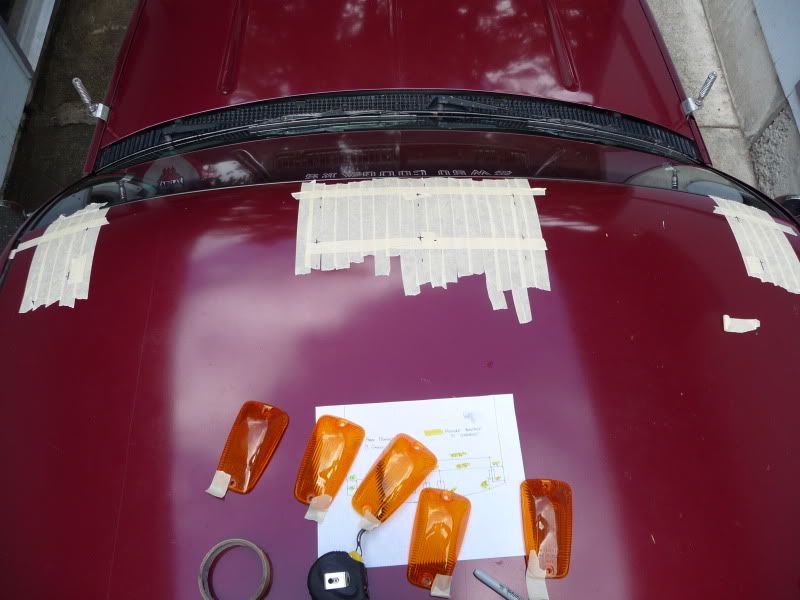

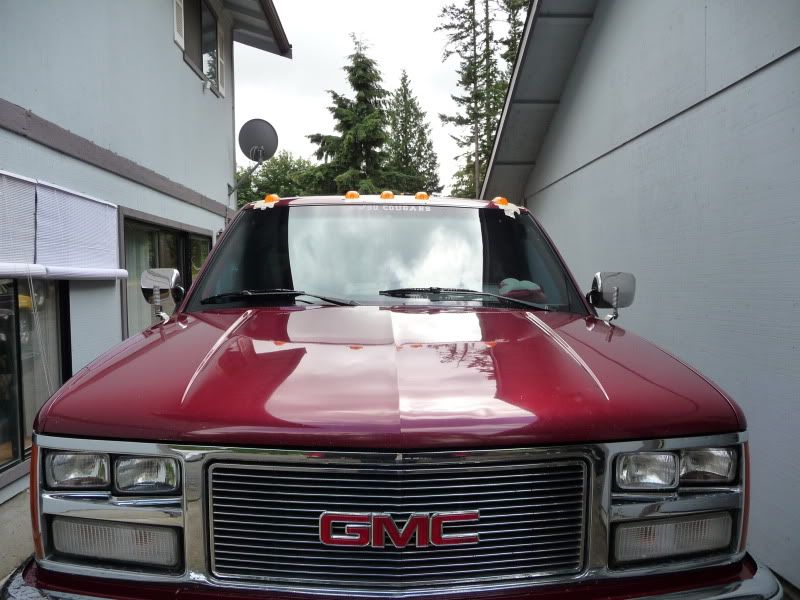
Once you are satisfied with the position, check and re-check your measurements and centerpunch the locations for the nut inserts. The factory inserts use a 5/16” hole, while the rubber inserts I used have a 3/8” hole. Start out with a small bit and work your way up.
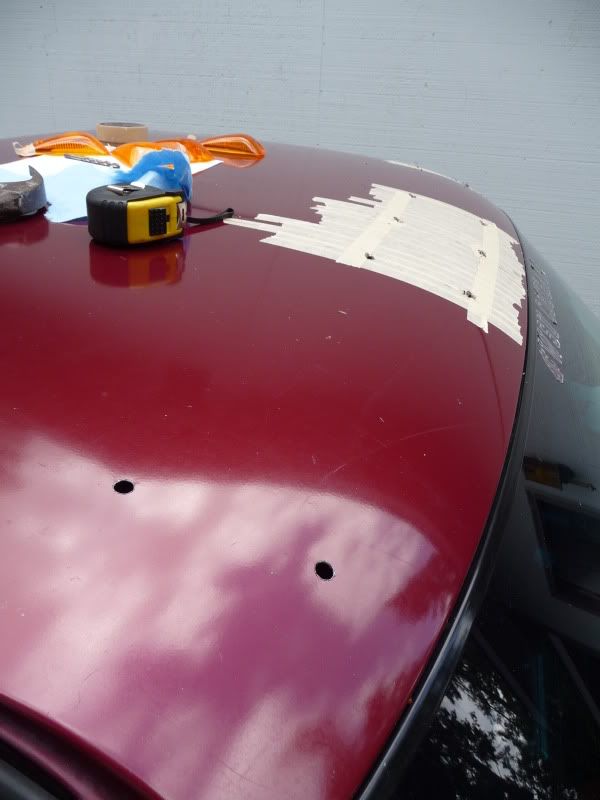
Now you can test fit the nut inserts. Once they are in, mark measure the distance from the large light socket hole to one of the nut holes, and mark and punch it. Now, for the fun part. You have to drill a 1 3/16” hole for the light socket and gasket to fit through.

Finish up your holes, and you should have something like this.
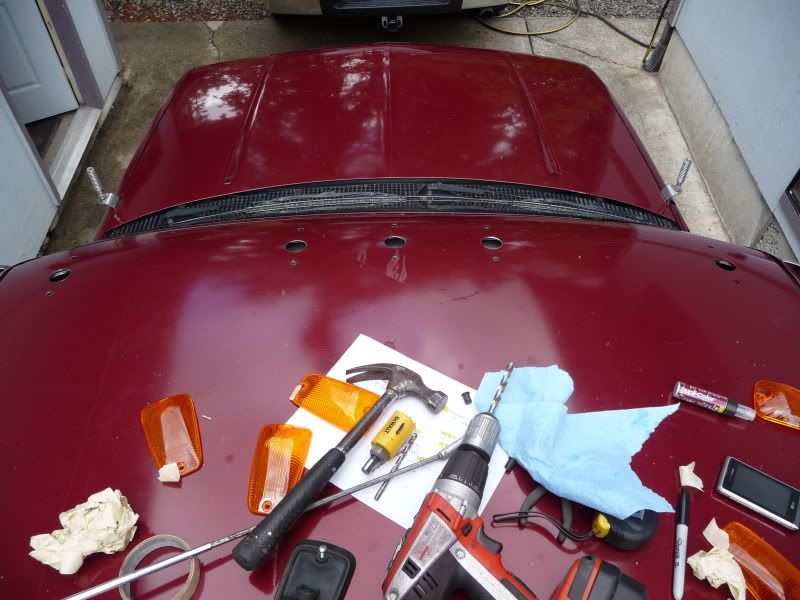
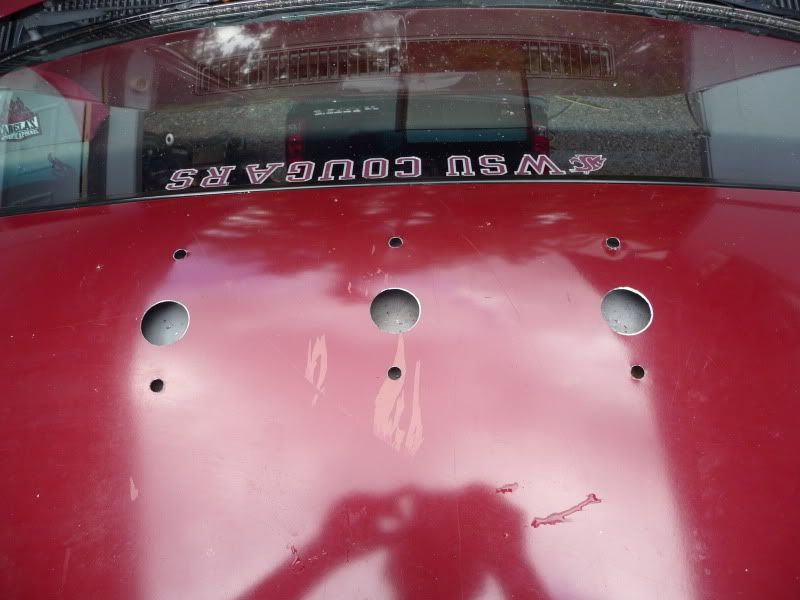

Clean out the metal shavings and put a little bit of paint on the exposed edges to prevent rust. Now run your wiring harness. It runs across the roof, down the driver’s pillar to the underdash distribution block where it plugs in.
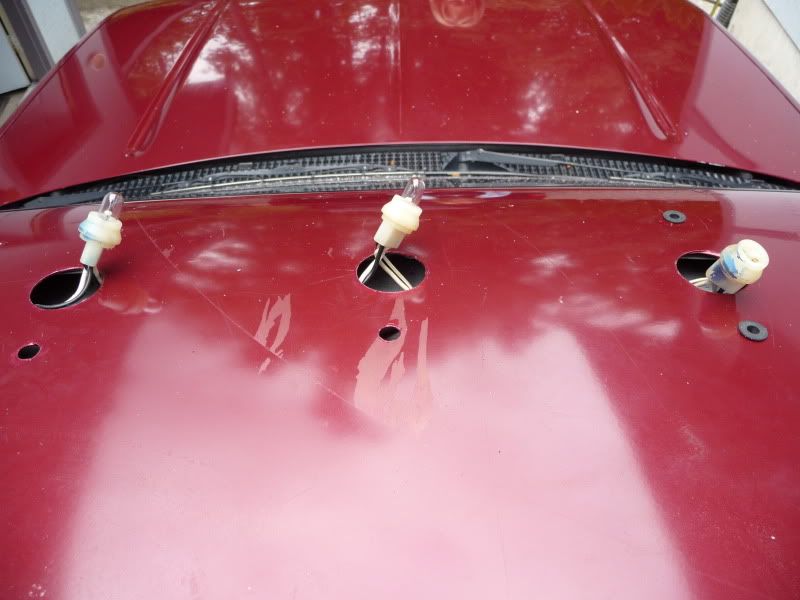
Once the harness is in, install the nuts, gaskets, lights and lenses. If you have Sirius or XM, you have the option to conceal your satellite antenna in a cablight. I took my Sirius antenna apart and fed the wire down through the roof, and put the antenna itself in a light. It’s extremely discrete way of having satellite radio and now the stupid magnet antenna isn’t scratching your roof (not like I cared about that anymore :lol .
.
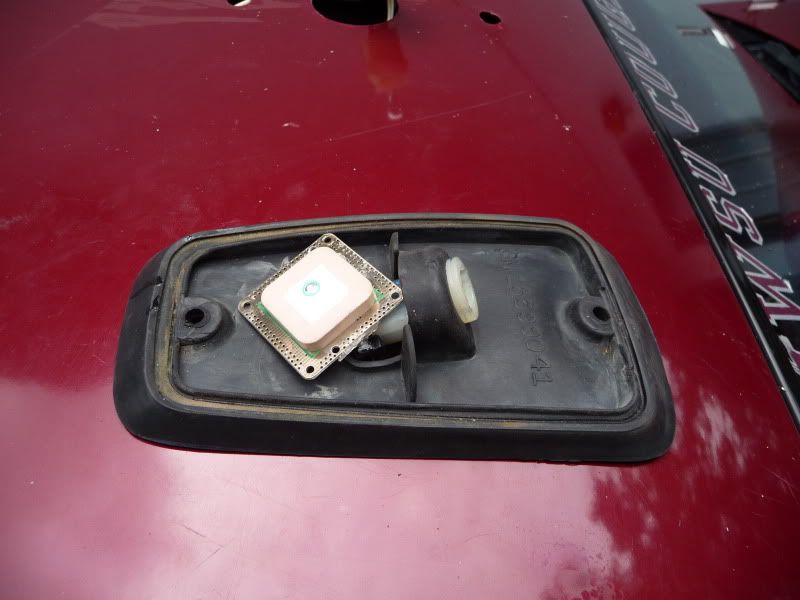
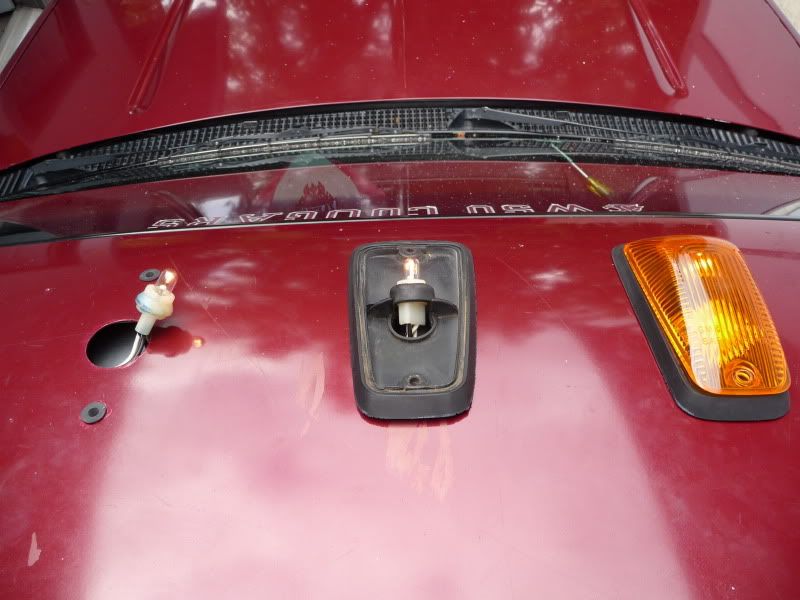
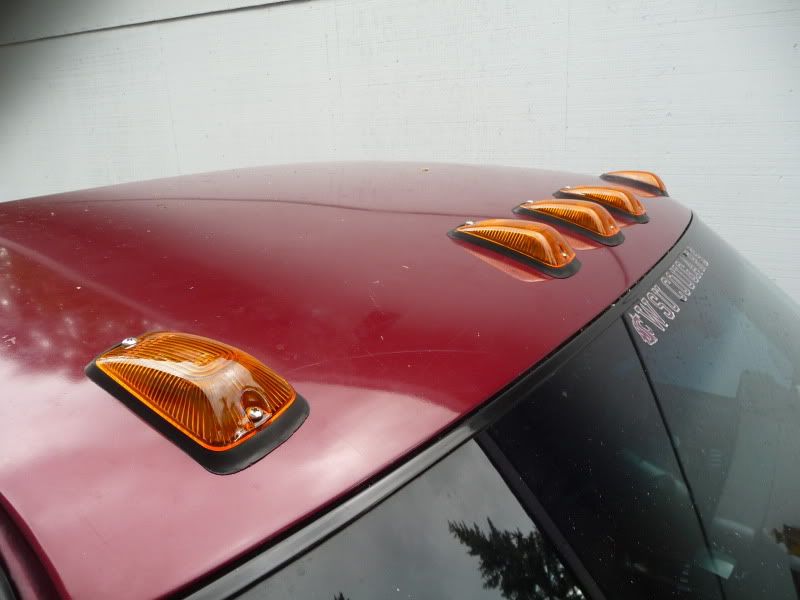
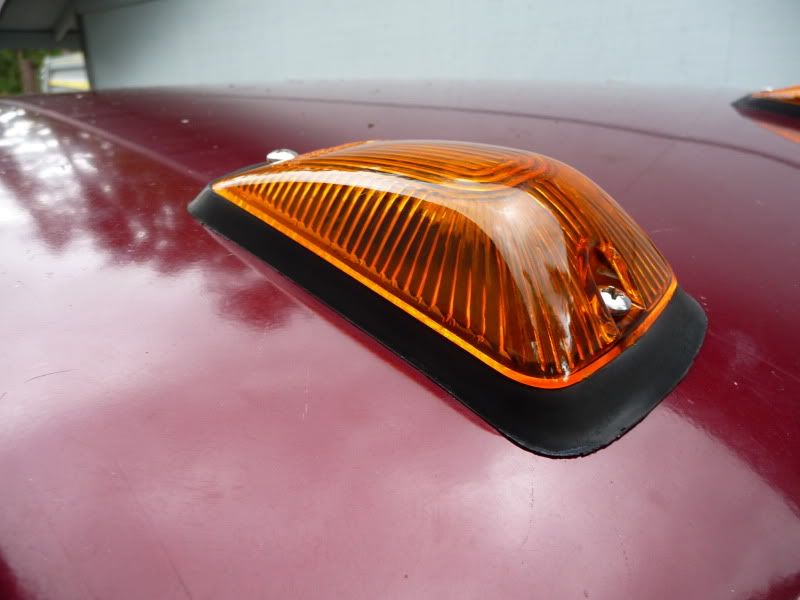
Here is the procedure I used to install OEM cab clearance lights on my truck. It took me about 3 months to finally bust out the drill and go to town. I got my cab lights from a seller on ebay for a total of $45 shipped. This included gaskets, new lenses, screws and the wiring harness (all of which are WAY more at the dealer, the harness is like $60 alone). I ended up ordering the factory nut insert, which ran about $7. Below is a list of parts needed to install these lights.
Lens ------------------ 15951646
Base ------------------- 15691885
Harness ---------------- 15302097
Bulbs ------------------ Style 194
Nut -------------------- 11609841 - Requires special tool to install
Screw ------------------ ? - They are metric M8x.5x30 I believe
There is an option to use a different nut/screw setup. I went to the local Ace hardware store and got the same style nut insert in rubber with matching stainless screws. I feel these work just as well as the factory nuts, and since they are rubber help seal the screws better. They also don't require a special tool to install. Below is the factory crimp nut and screw.

To start off you will need to determine where you want the cablights. I chose to install them in the factory locations. I measured one of the 3500HD trucks at work and drew this little diagram up. I then layed down masking take (to mark on) and set the lights up in their positions to check everything out.




Once you are satisfied with the position, check and re-check your measurements and centerpunch the locations for the nut inserts. The factory inserts use a 5/16” hole, while the rubber inserts I used have a 3/8” hole. Start out with a small bit and work your way up.

Now you can test fit the nut inserts. Once they are in, mark measure the distance from the large light socket hole to one of the nut holes, and mark and punch it. Now, for the fun part. You have to drill a 1 3/16” hole for the light socket and gasket to fit through.

Finish up your holes, and you should have something like this.



Clean out the metal shavings and put a little bit of paint on the exposed edges to prevent rust. Now run your wiring harness. It runs across the roof, down the driver’s pillar to the underdash distribution block where it plugs in.

Once the harness is in, install the nuts, gaskets, lights and lenses. If you have Sirius or XM, you have the option to conceal your satellite antenna in a cablight. I took my Sirius antenna apart and fed the wire down through the roof, and put the antenna itself in a light. It’s extremely discrete way of having satellite radio and now the stupid magnet antenna isn’t scratching your roof (not like I cared about that anymore :lol





